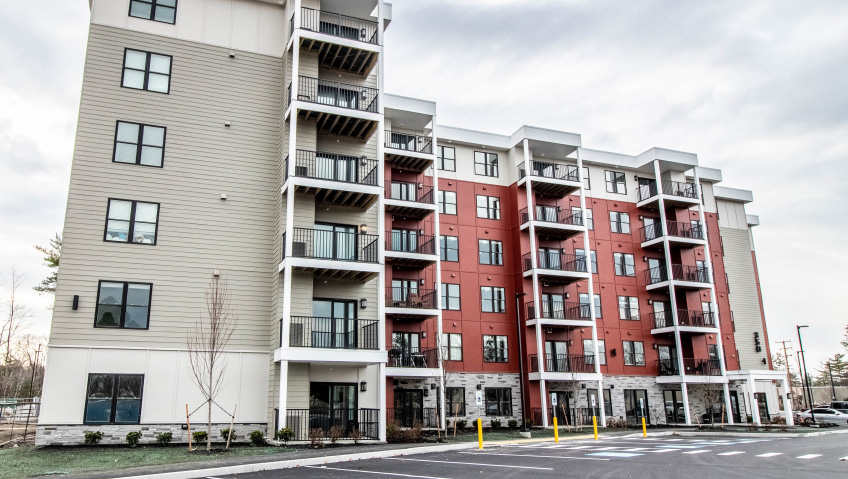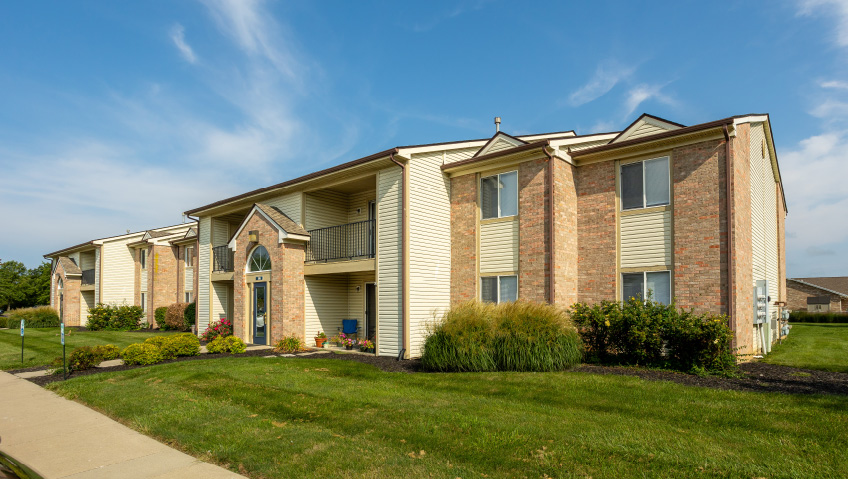While almost all utilities in North America offer consumers incentives to buy energy-efficient goods and services, members of the Consortium for Energy Efficiency (CEE) search out cutting-edge ways to speed up the commercialization of those energy-efficient solutions for very good reasons.
A collaboration of partners who consciously work together outside their organizational obligations to achieve shared goals, the Consortium strives to improve the design and marketing of mass-market energy-consuming products, working together to identify commercially viable performance levels and generating markets for energy-efficient products and services that are profitable—and beneficial—for all.
“We’re changing the paradigm in which society, or at least our stakeholders in North America, define Energy Efficiency (EE),” says John Taylor, Deputy Director.
Historically, Department of Energy laboratory tests have determined which products use more energy in their lifetime, and while that’s still valuable, the integration of renewables and a justified aversion to building new power plants has shifted focus to time-of-day and time-of-year when energy savings occurs, and even to some extent the location where savings occur.
“This is to adjust particular congestion that utilities have to deal with in terms of too much demand for electricity and not enough resources in that location in terms of power lines or generation in that area’s substations,” says Taylor.
CEE’s market reform initiatives have produced some noteworthy achievements in the past 30 years. To produce outstanding customer, utility system, and environmental advantages, members have jointly designed and implemented analytically based and meticulously investigated initiatives.
While many organizations strive to achieve crucial efficiency targets, the social contract among Consortium members obliges CEE to take into account options that cater to the whole range of integrated demand-side management goals including affordability, reliability, resilience, equity, and decarbonization.
Distributed energy resources (DERs), which offer sustainable options and the potential to boost resilience, frequently call for a focus on sufficient capacity as well as the time and locational value of energy saved. The responsibility of supplying secure, dependable, and inexpensive energy becomes more challenging as extreme weather events, ageing infrastructure, and challenges with siting new transmission lines threaten grid stability.
These are all issues CEE members are confronting right now.
In response to increasingly dynamic and volatile energy markets, an energy-efficient home that can respond to the changing value of energy based on time and place is vital. The CEESM Integrated home is a fuel-neutral platform that uses the potential of connected, smart goods to integrate for quantifiable benefits to customers, utilities, and the environment.
“A big part of the Integrated Home and residential buildings meeting our consensus specifications is helping define specifically performance that’s going to get us to products that are not only efficient at the particular time of day, but can disclose their location,” Taylor says. “We’re really demonstrating a consensus of our members that these programs are going to have to be increasingly capable of targeting specific savings.”
He adds that while there’s still a need for savings independent of a time or location, a big piece of the Integrated Home is demand flexibility and having a building that can adjust its consumption to reflect what the grid is dealing with at that moment.
“It’s a complicated issue, so we’re proud of the Integrated Home,” says Taylor. “Our members in the U.S. and Canada don’t agree on everything, but what the Integrated Home does represent is a good consensus of where they do agree, and we’re starting there in terms of our characterization of how EE is evolving.”
To better meet members’ present and future requirements, CEE has also recently opened the new Center for Equity and Energy Behavior, which builds on more than 10 years of research at CEE into ways that demand response (DR) and EE programs are influenced by human decision-making.
The Center’s mission is to assist members as they create and improve programs for EE and DR so ratepayers gain more fairly. To better capture the genuine participant and societal value, this includes improving program participation and benefits among underserved consumer segments, as well as identifying and characterizing non-energy impacts.
“Our members have cared about a portion of underserved audiences forever,” says Taylor. “Historically referred to as low-income, it’s maybe a customer who has relatively low means and does not have the capital necessary for buying a $20,000 air conditioner that’s the best of the best. But there are several cost-effective options when coupled with incentives that will deliver monthly bill savings and support decarbonization. Now our industry’s investment is expanding to address other underserved customers with attributes that go beyond just income.”
There’s a long, vibrant history of utilities and the program administrators offering direct-install programs for some types of customers who are below a certain income threshold, installing products at no cost and making recommendations, he says.
“What’s been exciting in the last few years is the seriousness and the breadth with which our members are addressing underserved customers, and the way the effort to bring equity to how these programs directly benefit particular customers has ramped up.”
CEE is always working on behalf of the Consortium of larger organizations, he adds, with each of them coming at equity with a different definition, or reason why they’re addressing it to meet the varied needs of their customers.
“Enough of our members are actually spending money and developing programs directly in support of underserved customers,” Taylor says. “They want to figure out how to do it well.”
CEE’s goal is to enable its members to succeed across all of its work.
“This is a new, important area where members are being asked to report impact and demonstrate they have successfully allocated impacts and programs across a wide range of customers,” Taylor says.
A big part of that is about CEE members agreeing on some definitions of equity they can all live with and the associated measurement of progress toward those definitions. “How do you measure success, and where have we had measurable success?” says Taylor. “Also, can that success be replicated in other locations?”
Much of that comes down to good analysis, collecting information, understanding the context in which the success occurred, being consistent in the definition of success, and then vetting it with other organizations in other parts of the country to see if they can replicate it. This is important work led by a behavioral scientist employed by CEE to get those underserved customers to participate in beneficial programs.
“It’s about motivating them, showing them what’s in it for them and having different angles of engagement and marketing to recruit them into participating so they do see the benefit,” says Taylor. “There’s a tremendous amount of science out there on how to do that and we’re trying to bring that to bear.”
CEE serves whomever its members serve, which means a variety of customers; one of British Columbia’s areas of focus when it comes to equity is the Indigenous communities, which is true of many other places as well. In other states and provinces it’s English as a second language, minority-owned businesses, and BIPOC (Black, Indigenous, and people of color) communities.
“And it’s not either-or, it might be many of these,” Taylor adds. “But because of the breadth of our membership—and this is why it’s a complex and important discussion—which audiences we include under the definition of underserved will be one of the major exercises at the beginning.”
The kinds of things you do for a small business owner to help them become more sustainable and use EE to the benefit of both their business and the environment may be different from how a tribal community in Northern Ontario gets served by the utility there, says Taylor. “Our goal is to categorize logical strategies that are going to be transferable and to do that you have to segment different strategies for different customer types.”
As pointed out above, being energy-efficient doesn’t just help citizens; it also impacts both climate change and air quality, not only by lessening the need for new power plants that emit carbon or other pollutants, but by off-setting new power plants or at least postponing them, and allowing existing plants to run less often.
“There are different power plants turning on or off throughout the year: coal, natural gas, wind, solar, and even diesel, believe it or not,” says Taylor. “There’s a serious effort underway to understand that the next power plant that gets turned on—and at what time—will be based on the conditions, and trying to shift away energy use at the time of greatest carbon intensity.”
If you can identify when the “dirtiest” power plants will be on and focus energy efficiency on that effort, you can reduce the use of fossil fuels.
“That’s a complicated analysis, but one our members are undertaking,” says Taylor. “We want to incorporate more renewables and don’t just rely on battery storage as an efficient solution, if for no other reason than the expense. You have to make these buildings more flexible in terms of when they consume energy.”
Making buildings flexible to incorporate more intermittent renewables means you can cost effectively put more solar and wind on the grid and have them work well without having something you can just turn on and off.
“There are a lot of ways in which these demand-side programs can contribute to reducing carbon in the atmosphere,” Taylor says. “We’re going after all of them.”
Another important part of CEE’s mission involves pressing for market transformation in collaboration with manufacturers and service providers.
“We’re supporting market change that’s beneficial to the environment and to customers, but in the end, we are utility companies trying to support market leaders bringing the best technology to market, including space and water heating manufacturers,” Taylor says. “They know a lot more about the business than we do, yet we have a very big stake in how water heaters and other large loads consume energy, and so do our shared customers.”
CEE members share customers with manufacturers, and sustaining success means collaboration and consultation with both manufacturers and the entire supply chain in these industries designing energy consuming products.
How does that collaboration happen?
“Our board of directors is very serious about process, and ensures CEE has a good understanding of the implications of our actions,” says Taylor.
This involves quite literally inviting manufacturers to provide written comments to CEE about anything it does that will possibly be used by the utility community, and staff supports a process where the board of directors looks at every comment that comes in and how it’s addressed.
“Their interests are not always the same as ours, and that’s okay, we expect that,” says Taylor. “There’s a huge amount of formal commenting that goes on where we actively solicit feedback from either the manufactures themselves or their trade association. Ultimately we seek technology-neutral solutions to meeting the objectives of our initiatives.”
CEE also conducts ongoing consultations, with staff regularly talking with industry players they collaborate with, along with one meeting a year where manufacturers, service providers, distributors, and retailers are invited to have a curated discussion to help CEE develop its initiatives actively, learning how their individual success is measured and limitations on the money they can spend on EE.
“When we have that level set, we talk about how to meet those goals collaboratively and what you think might be ways to think outside the box,” says Taylor. “We’ve had some important breakthroughs in understanding how an industry operates, the unintended consequence of what we think would help, and avoiding that pitfall. There are multiple layers of engagement with the industry that are a big part of who we are and what we do.”






